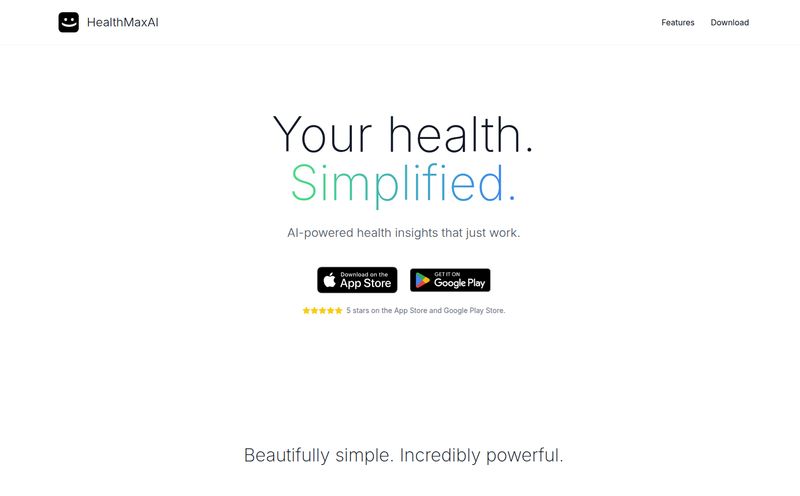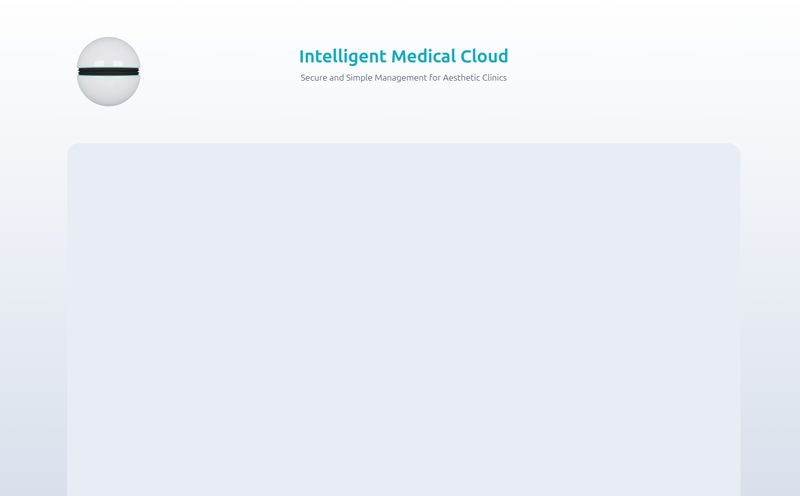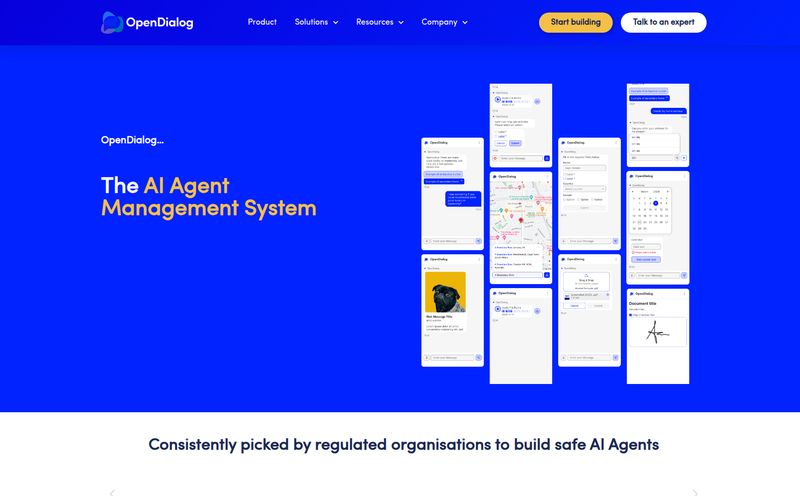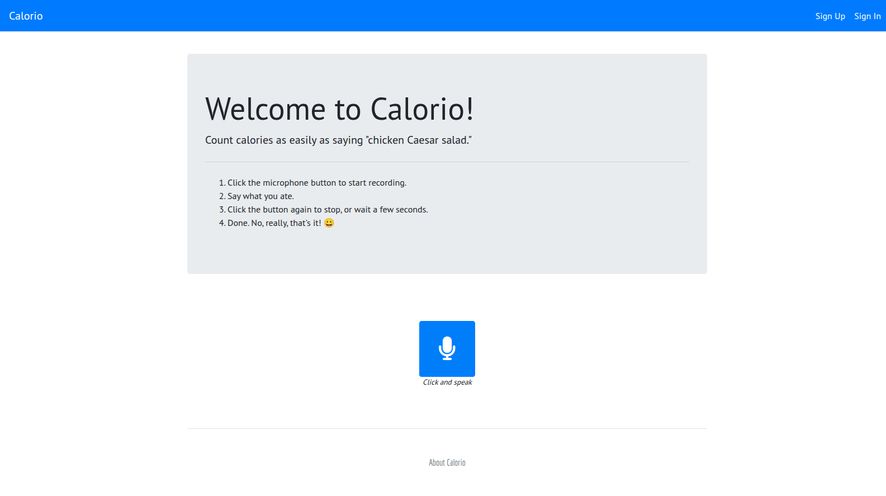Let’s have a little chat. You’ve got that one weird mole. You know the one. The one on your back you can’t quite see properly, or that new spot on your arm that you think is new. You do what we all do: you ignore it for a week, then you panic-Google it at 2 AM, and suddenly WebMD has convinced you that you have three days to live. We’ve all been there.
For years, the world of tech has been promising to solve these kinds of problems. As an SEO guy who's been watching traffic and trends for a long time, I've seen the search volume for terms like "online skin check" and "mole checker app" absolutely explode. People are hungry for accessible health tech. And that's where tools like Skinive come into the picture, waving a little AI-powered flag. But is it just another app that'll clutter up your phone, or is it something genuinely useful? I decided to take a look.
So, What Exactly is Skinive?
In the simplest terms, Skinive is an app that turns your smartphone's camera into a smart skin scanner. You take a picture of a mole, rash, spot, or whatever skin concern is on your mind, and its AI gets to work analyzing it. The whole idea is to give you a quick, objective risk assessment. It’s not just for worried individuals, either. They've built it for patients at home, for doctors looking for some decision support, and they even offer an API for developers. That last part tells me they're pretty serious about their tech.
What really caught my eye, though, is that Skinive is a CE-Marked medical software. For those not in the know, that’s a big deal. It means it conforms to the health, safety, and environmental protection standards for products sold within the European Economic Area (EEA). It’s not just some fly-by-night app; it has to meet some pretty rigorous standards. That alone makes it stand out from the crowd of wellness apps.
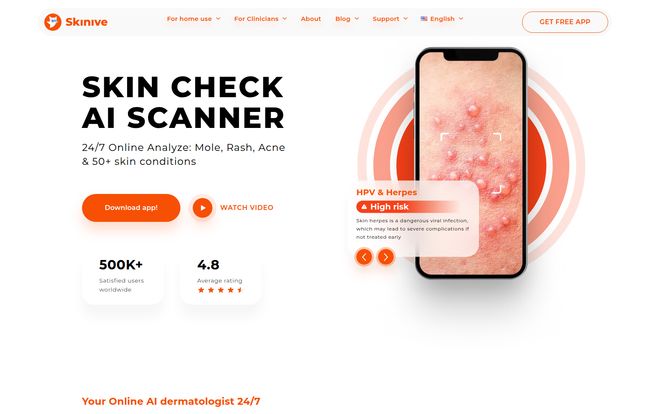
Visit Skinive
The Core Features: How Does It Actually Work?
Okay, so it scans your skin. But how? The magic is in the features. The AI-powered analysis is the star, of course. It compares your photo against a massive database of images to assess the risk for a whole range of conditions—from acne and fungal infections to more serious concerns like cancer risks. Think of it less as a robot doctor and more as a hyper-vigilant friend who’s really, really good at pattern recognition.
They’ve also included some genuinely clever tools to make the process better. There's a realtime camera assistance feature, which is brilliant. I mean, how many times have you tried to take a clear photo of your own shoulder and ended up with a blurry mess? This guide helps you get a good, clean shot, which is critical for the AI's accuracy.
My personal favorite feature might be the simplest one: the skin self-exam scheduling. It’s just a reminder. But building the habit of checking your skin is something every dermatologist recommends, and most of us… well, we forget. A little nudge from your phone can make all the difference in catching changes early.
And then there's the 3D Skin-map. This lets you document and track spots across your entire body over time. It creates a personal baseline. So, next year, you’re not just relying on fuzzy memory; you have a documented history. That’s powerful data to bring to a real-life appointment.
Putting it to the Test: The Good, The Bad, and The AI
No tool is perfect, so let’s get into the nitty-gritty. The potential here is huge, but you have to understand its limitations.
The Good Stuff
The biggest win for Skinive is accessibility. It brings an initial level of screening right into your home. For someone in a rural area or anyone facing a three-month wait for a dermatology appointment, this can provide some immediate, data-driven insight. It's about empowering you to be more proactive. The social proof is pretty staggering, too. The website boasts over 4.6 million skin checks performed. That's a ton of data, which in the world of AI, usually means a smarter, more refined algorithm.
It also helps cut through the anxiety of the unknown. Instead of spiraling down a Google rabbit hole, you get a structured risk assessment—low, medium, high. It gives you a more concrete reason to either relax or book that doctor's appointment.
The Reality Check
Now for the important part. Let me put this in bold, italics, and maybe flashing neon lights if I could: Skinive is not a substitute for a professional medical diagnosis. It's a risk assessment tool. An incredibly sophisticated one, but a screening tool nonetheless.
The accuracy is also entirely dependent on the quality of your image. This is the classic "garbage in, garbage out" principle. A blurry, poorly-lit photo isn't going to give you a reliable result. While their camera guide helps, user error is still a factor. You have to use it correctly to get the most out of it.
Some might argue that these apps can create a false sense of security. A "low risk" result might cause someone to ignore a spot that a trained human eye would find suspicious. That's a valid concern, and it's why the company itself stresses that this is for monitoring and awareness, not diagnosis.
What About the Cost? The Skinive Pricing Question
Here's where things get a little fuzzy. The app is listed as "Get Free App" and the pricing page is empty. In my experience, this almost always points to a freemium model. You can download the app and probably perform a basic scan or a limited number of scans for free. This is great for trying it out.
However, for more advanced features, unlimited scans, or perhaps more detailed reports, there's likely an in-app purchase or a subscription. This is a pretty standard model for health-tech apps. My advice? Download it, see what the free version offers, and then decide if the premium features are worth the cost for your peace of mind. Always check the App Store or Google Play for the most up-to-date pricing information before you commit.
My Final Thoughts as a Tech Watcher
So, what’s the verdict? I'm genuinely impressed. Not because I think AI is going to replace dermatologists tomorrow—it isn't. I'm impressed because Skinive understands its role. It’s not trying to be the doctor. It's trying to be the world's best assistant for your health.
It's a documentation and awareness tool. Use it to track that weird mole. Use it to get a quick, data-based second opinion on a new rash. Use it to build a visual history that you can show your doctor. When used correctly, as a part of a wider health strategy, it's an incredibly powerful addition to your personal toolkit.
The fact that it has a CE mark and a public-facing API for developers gives it a weight and seriousness that many of its competitors lack. It's a serious tool for a serious job.
Frequently Asked Questions (FAQ)
Is Skinive a substitute for a dermatologist?
- Absolutely not. It is a CE-Marked risk assessment tool designed for early screening and monitoring. Always consult a qualified medical professional for a diagnosis or treatment plan.
How accurate is the Skinive AI?
- The accuracy depends heavily on the quality of the photo you provide. It's designed to provide a risk level (low, medium, high) to help you decide on next steps, not to give a 100% certain diagnosis.
Is the Skinive app free?
- The app is free to download. It likely operates on a freemium model, where basic features are free and advanced features or unlimited use may require an in-app purchase or subscription. Check the app store for details.
What kind of skin conditions can Skinive check?
- Skinive can analyze images of moles, spots, rashes, and lesions to assess the risk of various conditions, including different types of cancer risk, acne, HPV, rosacea, and fungal infections.
What does it mean that the software is 'CE-Marked'?
- A CE Mark indicates that a product meets the European Union's high standards for health, safety, and environmental protection. For medical software like Skinive, it signifies a level of quality and reliability.
Is my health data safe with Skinive?
- As a medical software handling sensitive information, Skinive is expected to adhere to strict data privacy regulations like GDPR. However, it's always a good practice for users to review the app's privacy policy before uploading personal images and data.
Reference and Sources
- Skinive Official Website
- The Skin Cancer Foundation - Importance of Self-Exams
- Understanding CE Marking
